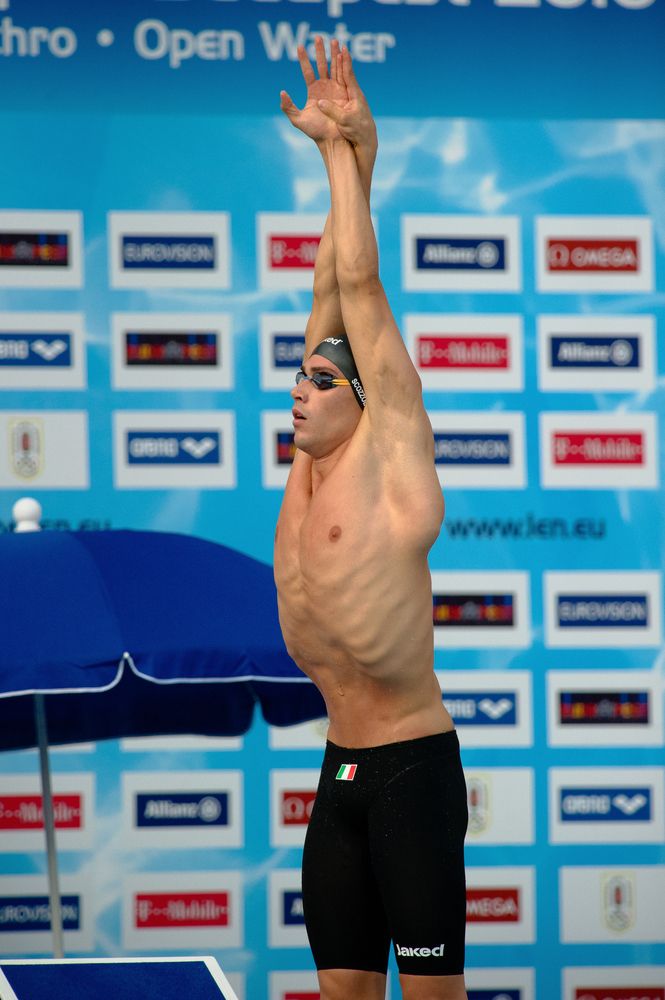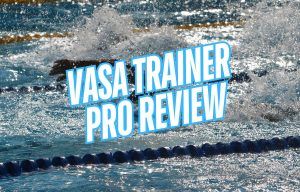
How to Use a Drag Chute for Faster Swimming
Looking for tips on how to use a drag chute for improved swim performances? Read on for some proven tips, sets, and pointers for training with a chute.

Core training has become an essential part of a swimmer’s preparation. Here’s a look at how a stronger core improves swimming performance.
Core strength has been one of the buzzwords on pool decks in the past 15 years.
More than just a fad, core strength is something that swimmers from Ryan Lochte to Roland Schoeman have all said are essential cogs in their training wheel.
Strength and conditioning specialist and former Olympic swimmer Nick Folker of Bridge Athletic constantly discusses the necessity of having a strong core often when working with Olympic champion swimmers such as Nathan Adrian, Anthony Ervin, and Natalie Coughlin.
Whether we are talking about improving your underwater dolphin kick, your start, or the amount of propulsion generated through your pull, it all originates from one place – the power plant of your body, the core.
Strong and efficient swimming begins at the core, at the center, and radiates out from there, through the quads, back and shoulders to the arms, hands and feet.
When you rotate side to side while doing freestyle, when you are pulling your heels to your butt during a breaststroke kick; each of these movements uses your core to initiate and execute.
The benefits of having a strong core go far beyond the pool, as you will learn briefly.
Here are four ways that improved core strength will help you perform better in the water (and in life!)—
A strong core gives you greater stability and balance. This occurs because the core acts as a stabilizer to the pelvis and spine.
As mentioned previously, any and all movements – and we are talking non-swimming movements as well such as walking, running, and lifting – pass through the centre of your body.
Core exercises specifically designed for enhanced swimming performance improve stability and balance in the water, which then allow swimmers to exert more power and strength.
Try streamlining with a loose (unflexed) mid-section. Now do it while sucking in your belly button and engaging your glutes.
Feel the difference? You should!
Having an engaged mid-section puts you in a rigid streamline. Beyond the pool this means that you will have improved posture, something that most swimmers I know could benefit from.
(On a personal note, I suffered from swimmer’s shoulder for years. I saw several different physical therapists and chiropractors, who prescribed painful deep tissue massage and various mobility exercises. It wasn’t until a grad student at UVic suggested I simply try to have better posture. Sometimes it literally is the simple answer that is the correct one.)
Nothing ruins a swimmer’s day faster than a sharp pang in one of the shoulder joints. Having a developed core means the body is straight and aligned, reducing the stress on joints and muscles.
Whether it is providing a stable platform for your pulling motion (to help avoid swimmer’s shoulder, for instance), or helping strengthen your hip movements and thereby helping avoid breaststroker knee issues, as well.
The benefit that will most appeal to you is this one. A strong core allows greater power from the outer muscles and limbs, including the arms for the pull, and the legs for your kick.
Having increased core strength will come in very helpful for when you become fatigued in your swimming.
One of my favorite core exercises is the almighty (and challenging) ab roller wheel. When you think about the full extension required to complete the exercise, the overhead extension, the bracing of the lower back, you can start to see how it transfers to swimming strongly in the water.
Keeping the glutes engaged will keep your kick going, and the improved body position will help you keep your stroke together for longer.
3 Dryland Workouts for Swimmers. No pool? No problem! Here are three dryland workouts for swimmers from beginner to advanced that you can do at home or on deck.

Olivier Poirier-Leroy Olivier Poirier-Leroy is the founder of YourSwimLog.com. He is an author, former national level swimmer, two-time Olympic Trials qualifier, and swim coach.
✅ Free shipping on Orders over $49
✅ Price Match Guarantee
✅ Best selection of gear for training and competition
✅ Fast and Easy Returns

“This is the best book I have ever seen concerning mental training.” — Ray Benecki, Head Coach, The FISH Swim Team


Looking for tips on how to use a drag chute for improved swim performances? Read on for some proven tips, sets, and pointers for training with a chute.

Ready to take your swimming to the next level? Here are seven ways that a drag chute can help you become a better and faster swimmer.

Wondering if a swim bench can help improve your swimming? Here are six benefits of swim benches for better technique, more power, and faster swimming.

Wondering if the VASA Trainer Pro is the right addition to your dryland training? Here is a hands-on review and how it can help you swim faster in the pool.

Not breathing into the walls is one of the fundamental skills developing swimmers are taught. Here is how powerful a no-breath approach is for turn and swim speed. Strong training habits are something swimmers hear a lot about from their earliest days of their competitive swimming careers. The greatest hits

Drills with a swim snorkel are one of the best ways to maximize engagement and skill development. Here are five swim snorkel drills to try for faster swimming.
SITE
SHOP
GUIDES

LANE 6 PUBLISHING LLC © 2012-2025
Join 33,000+ swimmers and swim coaches learning what it takes to swim faster.
Technique tips, training research, mental training skills, and lessons and advice from the best swimmers and coaches on the planet.
No Spam, Ever. Unsubscribe anytime.
